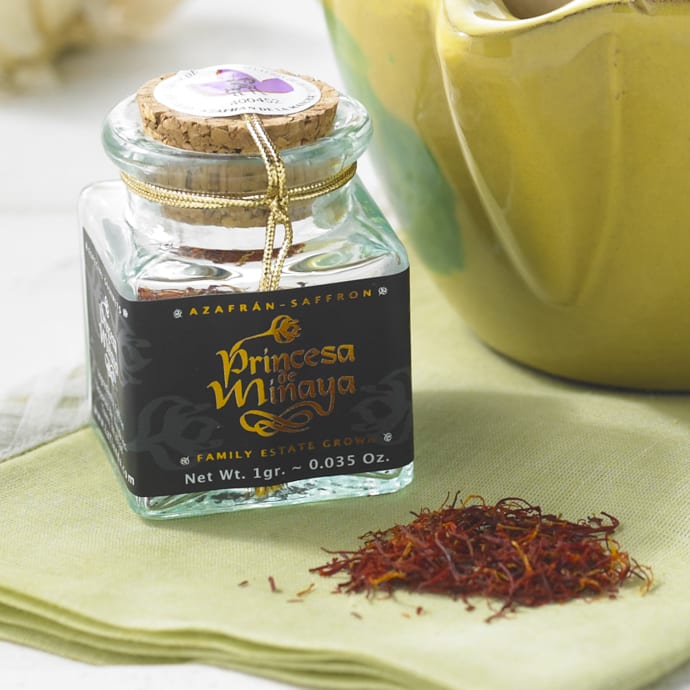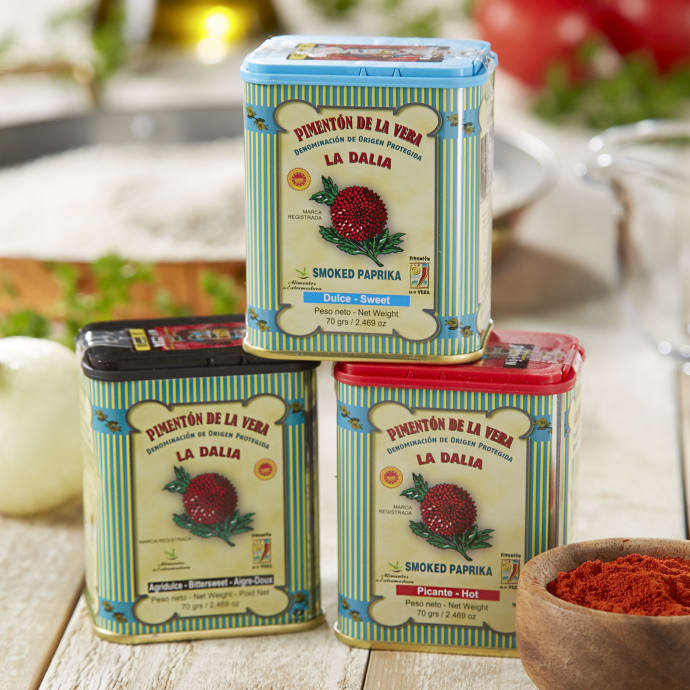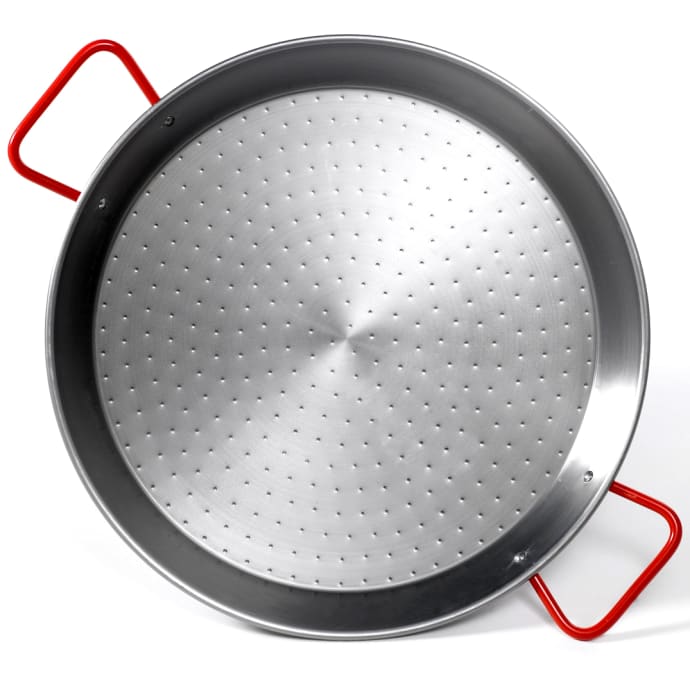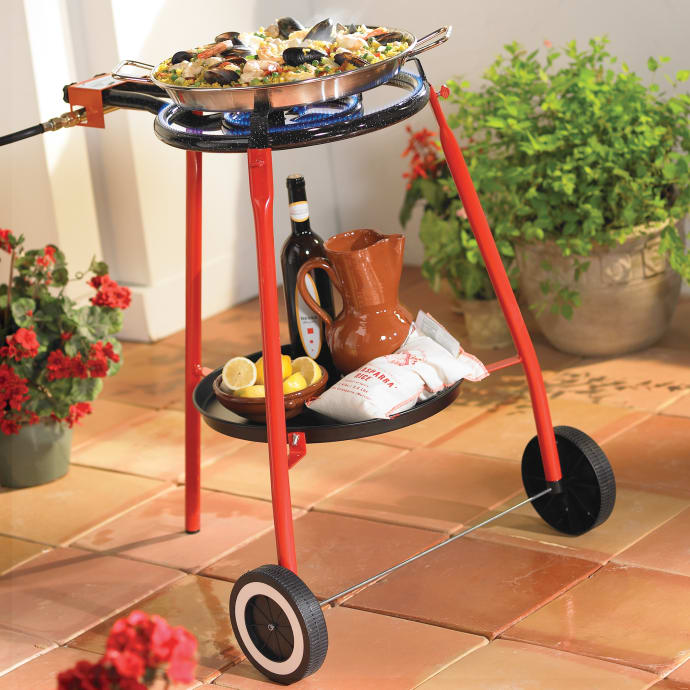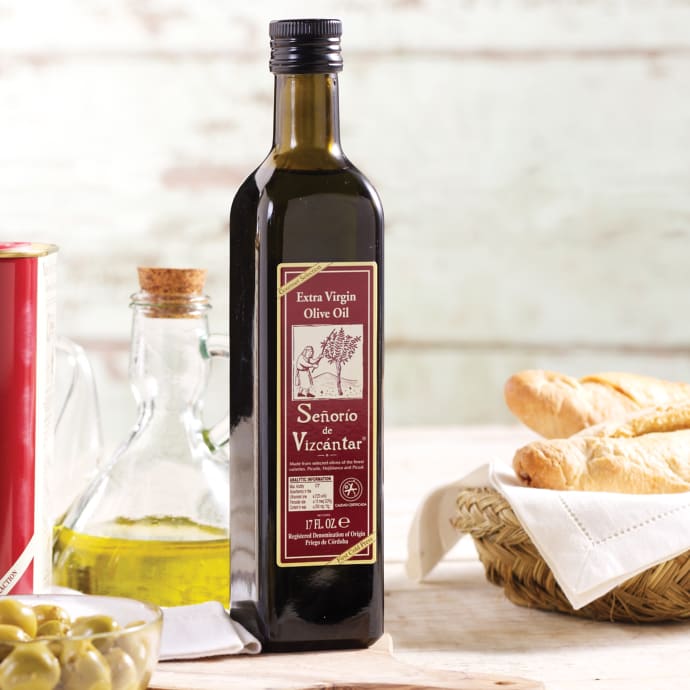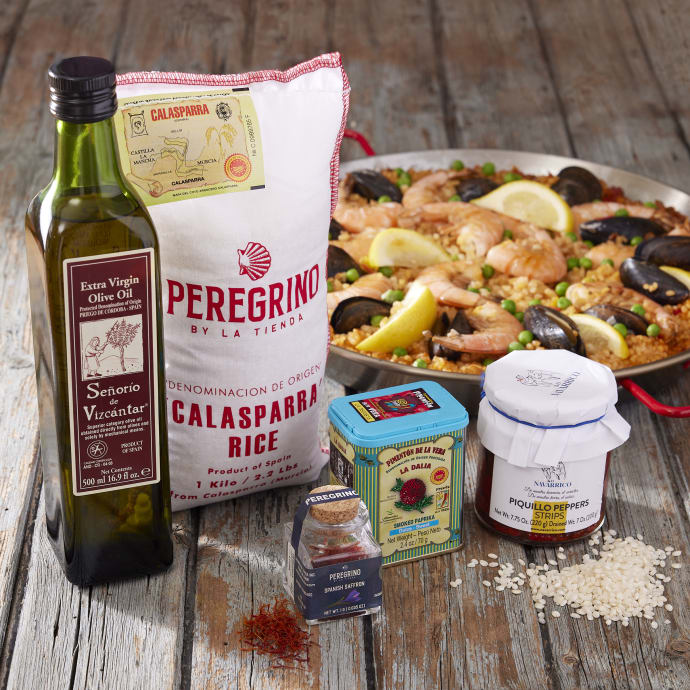
How to Make: Classic Paella
NBC Latino
-
August 21, 2012
Betty Cortina
The arguments are often heated. Ask a group of Spaniards, large or small, what makes a classic paella and you’ll get as many impassioned answers as there are Spaniards. You’ll hear it’s not paella if it doesn’t contain seafood. Or rabbit. Or chorizo. Or lima beans. That it’s not paella if it’s not cooked over an opened flame. Or in a paella pan. Some insist that unless the rice is imported from Spain you shouldn’t dare use as sacred a term as paella to refer to it. There are opinions on whether you can combine seafood and poultry (marriages have broken up over that one!) and on the kind of saffron used. And rest assured, everyone’s mother is the creator of the definitive version of Spain’s most famous contribution to the culinary world. “It’s a controversial question,” says Jesus “Lolo” Manso, a Spanish ex-pat who owns Socarrat, a highly-acclaimed New York City paella bar named after the crust of rice that forms on the bottom of the paella pan (akin to raspao, if you’re from anywhere in the Caribbean). “It’s like asking Americanos: What is an authentic hamburger? There are many answers and it can get a little philosophical.”
Yet there is one thing everyone agrees on: that paella is all about the rice—it must be short grain, never long—and that other ingredients (shrimp, chicken, chorizo, vegetables or anything else that finds its way in) are mere supporting characters. It makes sense when you realize the original paella was peasant food for farmers from Valencia, Spain’s great rice-growing region. (Indeed Spanish food writer Luis Antonio de Vega decades ago commented: “Valencia took rice and with it created one of the best dishes of world cookery. Imagine—with rice! That white grain on which the impoverished of the world depend for sustenance.”) Not surprisingly, the earliest paella dishes were humble efforts, typically including land snails, eel, rabbit and lima beans—ingredients that were easy and cheap to find at the time. “The farmers would take a pan into the fields and take some rice and cook it with whatever was around,” says Jonathon Harris, whose family has run LaTienda.com, one of the largest US importers of Spanish ingredients and cooking equipment, for more than 15 years.
It’s certainly come a long way, with chefs from around the world now experimenting with it, paella bars like New York’s Socarrat popping up coast to coast, and one of Spain’s most famous culinary ex-pats, Chef Jose Andrés, hosting an annual Paella Festival in Washington DC. (This year’s runs September 15 to 30.)
Considered a summer dish because it’s often cooked outside over an open flame in Spain, it’s just as easy (and effective) to make it at home on your stove any time of the year. And while the debates about ingredients that should or should not be included rage on, here are a few more tips everyone agrees on. First, use short grain Valencia or Bomba rice rather than long-grain rice, which changes the flavor and texture. Second, if you’re not using a true paella pan cook in a vessel that’s wide and shallow; the rice should only come up about one inch, and once cooked it should be dry, not soupy or creamy like Italian risotto. Once the rice is in, don’t stir it. “This is one of the most important things,” says Manso, “it helps make sure there is socarrat at the end.” Last, splurge on saffron. Yes, it’s the world’s most expensive spice but a little goes a long way. And paella made with colorings like annatto or turmeric just isn’t nearly as tasty.
Below is a recipe for classic paella from LaTienda.com.
La Tienda’s Paella Recipe
6 cups clam or seafood broth
1 tsp thread saffron
1 1/2 pounds firm-fleshed fish, cut in bite-sized pieces
1 dozen mussels
1 dozen small clams
12 large shrimp in shells
Sea salt
2 tbsp parsley, minced
8 cloves garlic, minced
1 tbsp fresh thyme
2 tsp sweet smoked paprika
8 tbsp olive oil
1 medium onion, chopped
6 scallions, chopped
1 red bell pepper, finely chopped
1 large tomato, chopped
2 cups Bomba paella rice or Calasparra paella rice
Lemon wedges
Alioli (garlic mayonnaise)
1. Heat the broth in a large pot. Stir in saffron. Pat fish and shrimp dry between paper towels. Sprinkle with salt and let sit 10 minutes. With a mortar and pestle mash parsley, garlic, thyme and 1/8 tsp salt into a paste. Stir in paprika; add water if necessary to form a paste.
2. Heat 6 tbsp of oil in 15″ paella pan over medium high heat and quickly brown the fish 1-2 minutes. Do not fully cook. Remove to warm platter. Add remaining 2 tbsp of oil, onion, scallions and bell pepper to paella pan and cook until the vegetables are slightly softened. Raise heat, add tomato and cook until it becomes sauce-like, 2 to 5 minutes. Pour in the hot broth and bring to a boil. Sprinkle the rice evenly across the pan. Boil for 3 minutes, stirring rice and rotating pan occasionally. Add all reserved fish (but not shrimp). Stir in parsley paste. Taste for salt. Do not stir after this point. Lower the heat, continue to simmer until rice is no longer soupy but enough liquid remains to continue cooking the rice (about 10 min.). Add extra liquid if necessary.
3. Arrange shrimp, clams and mussels over rice, placing edges of mussel and clam shells so they open facing up. Cook, uncovered, for 15-20 minutes until rice is almost done. Remove pan from the heat and cover with foil. Let sit 10 minutes. Garnish with lemon wedges and serve with fresh alioli. Makes 4 to 6 servings.
The arguments are often heated. Ask a group of Spaniards, large or small, what makes a classic paella and you’ll get as many impassioned answers as there are Spaniards. You’ll hear it’s not paella if it doesn’t contain seafood. Or rabbit. Or chorizo. Or lima beans. That it’s not paella if it’s not cooked over an opened flame. Or in a paella pan. Some insist that unless the rice is imported from Spain you shouldn’t dare use as sacred a term as paella to refer to it. There are opinions on whether you can combine seafood and poultry (marriages have broken up over that one!) and on the kind of saffron used. And rest assured, everyone’s mother is the creator of the definitive version of Spain’s most famous contribution to the culinary world. “It’s a controversial question,” says Jesus “Lolo” Manso, a Spanish ex-pat who owns Socarrat, a highly-acclaimed New York City paella bar named after the crust of rice that forms on the bottom of the paella pan (akin to raspao, if you’re from anywhere in the Caribbean). “It’s like asking Americanos: What is an authentic hamburger? There are many answers and it can get a little philosophical.”
Yet there is one thing everyone agrees on: that paella is all about the rice—it must be short grain, never long—and that other ingredients (shrimp, chicken, chorizo, vegetables or anything else that finds its way in) are mere supporting characters. It makes sense when you realize the original paella was peasant food for farmers from Valencia, Spain’s great rice-growing region. (Indeed Spanish food writer Luis Antonio de Vega decades ago commented: “Valencia took rice and with it created one of the best dishes of world cookery. Imagine—with rice! That white grain on which the impoverished of the world depend for sustenance.”) Not surprisingly, the earliest paella dishes were humble efforts, typically including land snails, eel, rabbit and lima beans—ingredients that were easy and cheap to find at the time. “The farmers would take a pan into the fields and take some rice and cook it with whatever was around,” says Jonathon Harris, whose family has run LaTienda.com, one of the largest US importers of Spanish ingredients and cooking equipment, for more than 15 years.
It’s certainly come a long way, with chefs from around the world now experimenting with it, paella bars like New York’s Socarrat popping up coast to coast, and one of Spain’s most famous culinary ex-pats, Chef Jose Andrés, hosting an annual Paella Festival in Washington DC. (This year’s runs September 15 to 30.)
Considered a summer dish because it’s often cooked outside over an open flame in Spain, it’s just as easy (and effective) to make it at home on your stove any time of the year. And while the debates about ingredients that should or should not be included rage on, here are a few more tips everyone agrees on. First, use short grain Valencia or Bomba rice rather than long-grain rice, which changes the flavor and texture. Second, if you’re not using a true paella pan cook in a vessel that’s wide and shallow; the rice should only come up about one inch, and once cooked it should be dry, not soupy or creamy like Italian risotto. Once the rice is in, don’t stir it. “This is one of the most important things,” says Manso, “it helps make sure there is socarrat at the end.” Last, splurge on saffron. Yes, it’s the world’s most expensive spice but a little goes a long way. And paella made with colorings like annatto or turmeric just isn’t nearly as tasty.
Below is a recipe for classic paella from LaTienda.com.
La Tienda’s Paella Recipe
6 cups clam or seafood broth
1 tsp thread saffron
1 1/2 pounds firm-fleshed fish, cut in bite-sized pieces
1 dozen mussels
1 dozen small clams
12 large shrimp in shells
Sea salt
2 tbsp parsley, minced
8 cloves garlic, minced
1 tbsp fresh thyme
2 tsp sweet smoked paprika
8 tbsp olive oil
1 medium onion, chopped
6 scallions, chopped
1 red bell pepper, finely chopped
1 large tomato, chopped
2 cups Bomba paella rice or Calasparra paella rice
Lemon wedges
Alioli (garlic mayonnaise)
1. Heat the broth in a large pot. Stir in saffron. Pat fish and shrimp dry between paper towels. Sprinkle with salt and let sit 10 minutes. With a mortar and pestle mash parsley, garlic, thyme and 1/8 tsp salt into a paste. Stir in paprika; add water if necessary to form a paste.
2. Heat 6 tbsp of oil in 15″ paella pan over medium high heat and quickly brown the fish 1-2 minutes. Do not fully cook. Remove to warm platter. Add remaining 2 tbsp of oil, onion, scallions and bell pepper to paella pan and cook until the vegetables are slightly softened. Raise heat, add tomato and cook until it becomes sauce-like, 2 to 5 minutes. Pour in the hot broth and bring to a boil. Sprinkle the rice evenly across the pan. Boil for 3 minutes, stirring rice and rotating pan occasionally. Add all reserved fish (but not shrimp). Stir in parsley paste. Taste for salt. Do not stir after this point. Lower the heat, continue to simmer until rice is no longer soupy but enough liquid remains to continue cooking the rice (about 10 min.). Add extra liquid if necessary.
3. Arrange shrimp, clams and mussels over rice, placing edges of mussel and clam shells so they open facing up. Cook, uncovered, for 15-20 minutes until rice is almost done. Remove pan from the heat and cover with foil. Let sit 10 minutes. Garnish with lemon wedges and serve with fresh alioli. Makes 4 to 6 servings.
Other Press
The Winter Travel Shortlist: Problem-Solving Essentials I’m Packing This Season
Forbes
-
November 20, 2025
54 Gifts for People Who Have Everything
Wirecutter
-
November 6, 2025
What Andrew Zimmern Can’t Live Without
The Strategist
-
June 30, 2025
8 Tasty Ways To Travel The World With Food
Forbes
-
June 17, 2025
Featured Products

Princesa de Minaya Saffron, D.O. La Mancha
SN-09
(53)
$27.00$27.00

Smoked Paprika Trio by La Dalia
PK-12
(54)
$22.00$22.00
 BEST SELLER
BEST SELLERBomba Paella Rice by Peregrino
RC-03
(110)
$25.00$25.00

Wood-Fire Roasted Piquillo Peppers from Lodosa
PQ-14
(31)
$19.00$19.00

17 Inch Traditional Steel Paella Pan - Serves 8
PP-02
(17)
$38.00$38.00

Paella Burner with Rolling Stand and FREE 17 inch Pan
PB-06B
(7)
$399.00$399.00
 BEST SELLER
BEST SELLERSeñorío de Vizcántar Special Selection Extra Virgin Olive Oil
OO-45
(42)
$29.00$29.00
 BEST SELLER
BEST SELLEREssential Paella Ingredients
PA-05
(32)
$85.00$85.00

